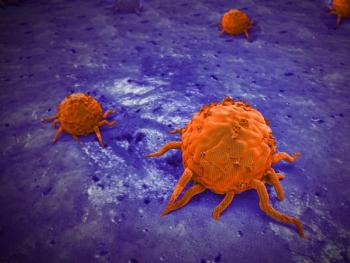
ASH Releases New Guidelines on Treating Newly Diagnosed AML in Older Adults
The American Society of Hematology released guidelines that “take providers through the conversations they have with newly diagnosed patients, almost in real-time.”
The American Society of Hematology (ASH) recently released new guidelines to aid older patients who are newly diagnosed with acute myeloid leukemia (AML), as well as their health care providers in making care decisions.1
The guidelines, developed in partnership with the McMaster GRADE Centre, are based on systematic reviews of all available evidence. The recommendations were developed on the basis that throughout a patient’s disease course, optimal care includes ongoing discussions between clinicians and their patients, continuously examining goals of care, and the corresponding risk-benefit balance of treatment.
“These guidelines take providers through the conversations they have with newly diagnosed patients, almost in real-time,” Mikkael Sekeres, MD, chair of the ASH AML guideline panel and director of the Leukemia Program at Cleveland Clinic Taussig Cancer Institute, said in a press release.2 “A discussion between patient and physician is instrumental to creating a personalized treatment plan, and these guidelines are unique in that they keep a patient’s goals and wishes front and center in that conversation.”
Overall, the guidelines consist of 6 overarching recommendations, including:
- For older adults with newly diagnosed AML who are candidates for cancer therapy, ASH recommends offering antileukemic therapy over best supportive care.
- Thereafter, for those who are considered candidates for antileukemic therapy, ASH suggests the use of intensive antileukemic therapy over less intensive antileukemic therapy.
- For those who are not candidates for allogeneic hematopoietic stem cell transplantation (allo-HSCT) and who have achieved remission after at least a single cycle of intensive antileukemic therapy, ASH suggests postremission therapy over no additional therapy.
- Should patients be considered appropriate for antileukemic therapy but not for intensive antileukemic therapy, ASH suggests the use of monotherapy with hypomethylating agents (azacytidine and decitabine) or low-dose cytarabine over a combination of 1 of these drugs with other agents.
- Among patients who achieve a response after receiving less-intensive therapy, ASH suggests continuing therapy indefinitely until progression or unacceptable toxicity over stopping therapy altogether.
- For those no longer receiving antileukemic therapy, ASH suggests having red blood cell transfusions available over not having transfusions available; however, there may also be rare instances where platelet transfusions may be of benefit in the event of bleeding, though there is less data to support this practice.
“We recognize the serious issues that patients face, including the side effects and risks of chemotherapy and time in the hospital,” Sekeres explained in the release. “Weighing these issues against possible benefits, including remission and extended life, patients can decide what treatment is consistent with their goals.”
With regard to the last recommendation, the organization highlighted the need for comparative studies addressing the effectiveness of transfusions. According to researchers, the optimal study design to inform this recommendation question would be a randomized clinical trial comparing the options of interest and measuring the outcomes that are important to patients, such as health-related quality of life, symptom burden, survival, and the quality of end-of-life care provided.
“Absent higher-quality data that answer these important clinical questions about the benefits and burdens of palliative blood product transfusions among patients with AML no longer receiving antileukemic therapy, clinicians will continue to provide care on an ‘n of 1’ basis, doing what they think is best for the patient, in accordance with their personal values and wishes,” the authors of the guidelines wrote.
References:
1. Sekeres MA, Guyatt G, Abel G, et al. American Society of Hematology 2020 guidelines for treating newly diagnosed acute myeloid leukemia in older adults. Blood Advances. Submitted March 25, 2020; accepted May 8, 2020; published online August 6, 2020. Doi: 10.1182/bloodadvances.2020001920.
2. ASH Releases New Clinical Practice Guidelines on Acute Myeloid Leukemia in Older Adults [news release]. Washington. Published August 6, 2020. Accessed August 10, 2020. https://www.hematology.org/newsroom/press-releases/2020/ash-releases-new-clinical-practice-guidelines-on-acute-myeloid-leukemia-in-older-adults
Newsletter
Stay up to date on recent advances in the multidisciplinary approach to cancer.




















































































